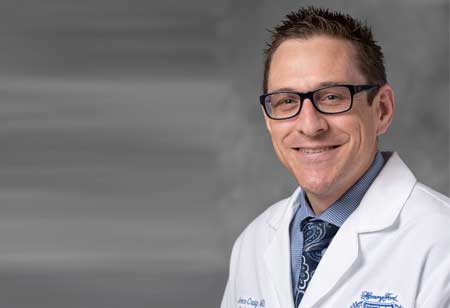Thank you for Subscribing to Healthcare Business Review Weekly Brief

Enhancing Odontogenic Sinusitis Awareness
Healthcare Business Review
John Craig is a rhinologist (Subspecialty Otolaryngologist at Henry Ford Health). Rhinologists manage both surgical and non-surgical conditions of the nose, paranasal sinuses, and skull base. Fueled by 8 years of clinical and research expertise, he has been instrumental in driving innovative changes in recognizing and treating odontogenic sinusitis (ODS). ODS is a unique type of sinus infection stemming from infected teeth or complications from dental procedures.
Could you describe your career journey so far and your key responsibilities at Henry Ford Health?
I started my career as an otolaryngologist in the surgical residency program at the State University of New York Upstate Medical University (Syracuse, NY), where I trained for five years. Following residency, I completed a 1-year subspecialty fellowship in Rhinology and Endoscopic Skull Base Surgery at the University of Pennsylvania (Philadelphia, PA). Since then I have been the Division Head of Rhinology at Henry Ford Health in Detroit, MI for the last 8 years, and I have been studying ODS during that time.
How can we enhance awareness about the impact of odontogenic sinusitis (ODS) among healthcare professionals?
Unfortunately, ODS has only recently received increased attention in the scientific literature, has been underrepresented in sinusitis guidelines. Additionally, ODS has not routinely been taught in medical and dental schools. Therefore, ODS is frequently overlooked by both medical and dental providers. ODS patients usually present to ENT surgeons due to prominent sinusitis symptoms, but if overlooked and the dental infection is not treated, the sinus infection will likely persist, and in some cases spreads outside the sinuses to the eye, brain, or elsewhere in the body.
It is actually easy to treat in that the dental source must be treated, and then often the sinus infection requires minimally invasive surgical drainage (because antibiotics do not usually work). However, successful treatment hinges on providers recognizing the possible dental source.
Are there any recent methods to treat and diagnose ODS?
In 2021, I co-led an international multidisciplinary consensus statement on diagnosing ODS with Alberto Saibene from University of Milan, and we collaborated with 17 international ODS experts. We reached consensus on numerous points, but the key to diagnosing ODS is usually through multidisciplinary collaboration where dental specialists confirm the infectious dental source with dental exam and imaging, and ENT surgeons confirm the infectious sinusitis with nasal endoscopy (scope placed inside the nose to look for infectious mucus draining from sinuses).
The diagnosis is not always straightforward. In most instances, the infected teeth do not cause pain, and may look outwardly healthy. While most patients have colored nasal mucus that may be foul-smelling, about 10-15% of patients have no sinus symptoms at all.
The suggested treatment approach depends whether the dental source is treatable. If treatable, the dental source will require treatment. However, if these ODS patients are terribly symptomatic, evidence shows that up-front sinus surgery can be offered to resolve sinusitis symptoms faster, followed by appropriate dental treatment. Patients can always get the teeth treated first, but studies have shown slower resolution of the sinus disease in these instances, so some patients will remain symptomatic for weeks to months.
“Successful odontogenic sinusitis treatment generally relies on high clinical suspicion and collaboration between ENT surgeons and dental specialists.”
If there is no treatable dental source, then most patients will need minimally invasive sinus surgical drainage of the infection because antibiotics do not usually work, though they can be tried first to see if the infection clears.
How do you foresee the future of healthcare, specifically in terms of improving care delivery for patients with ODS?
ODS patients usually suffer unnecessarily due to a lack of recognition, which leads to substantial delays to appropriate treatment. Outcomes are improved dramatically with streamlined care between ENT surgeons (or rhinologists) and dental specialists, but this can be challenging to coordinate. Hopefully over time, increased ODS awareness will help both our medical and dental fields collaborate more effectively to optimize ODS management.
In your experience, what would be the advice you would like to impart to your colleagues and fellow peers in the industry?
Despite the strain of being a healthcare provider, at the end of the day we are trying to improve patients’ quality-of-life. If we see something isn’t working toward this aim, it makes the job more fulfilling to question the status-quo and search for better solutions. Whether you conduct clinical or basic science research studies, or work to streamline clinical care for your patients, if you always aim to improve patient outcomes, you and your patients will reap the benefits.









